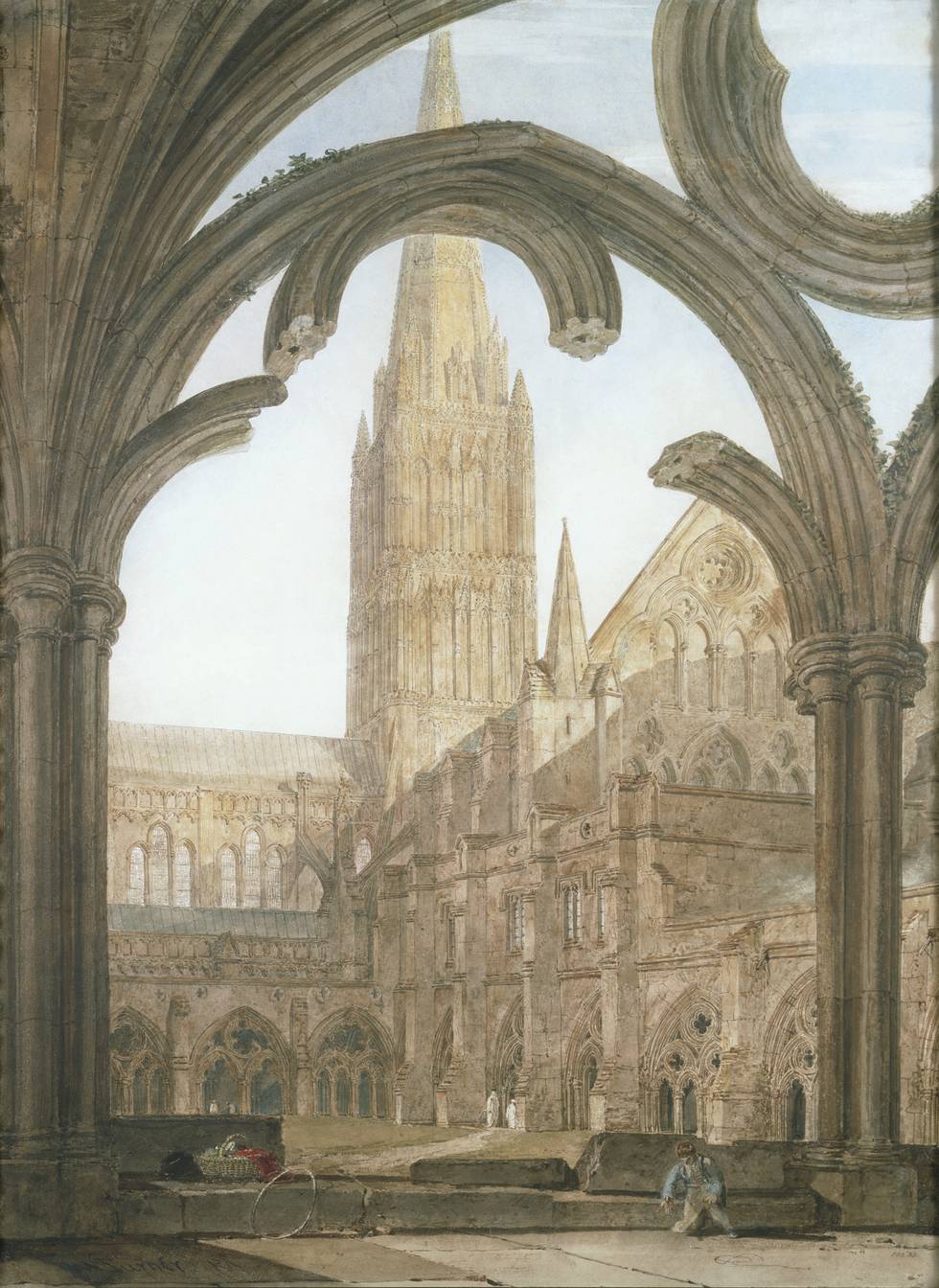J.M.W Turner was a British artist who worked during the Romantic period and is famous for his paintings in oil and watercolour and as a printmaker. He was a precocious talent who entered the Royal Academy in 1789, aged 14, and was elected Royal Academician in 1802, aged 27. His long career spanned a period of great upheaval marked by the Napoleonic wars and rapid industrialisation; he responded to these sweeping changes in imaginative and challenging ways in his painting.
Turner began his career as a painter of architectural views in watercolour. His approach was innovative, with unexpected, off-centre viewpoints, such as in South view of Salisbury Cathedral from the Cloisters.
He explored and pushed the potential of watercolour, in terms of atmospheric effect and scale, to rival that of oil painting such as The Passage of Mount St Gothard from the Centre of Teufels Broch. Exhibiting works in both media at exhibitions at the Royal Academy and elsewhere.
His later work became increasingly experimental in approach to composition and media, and his legacy as an innovator was acknowledged in the creation of the Turner Prize, established in 1984, to promote new developments in contemporary art.
Turner travelled extensively on sketching tours across the British Isles, France, Italy, Switzerland and Germany. He was primarily a painter of landscape, occasionally giving these works grandiose, poetic themes.

